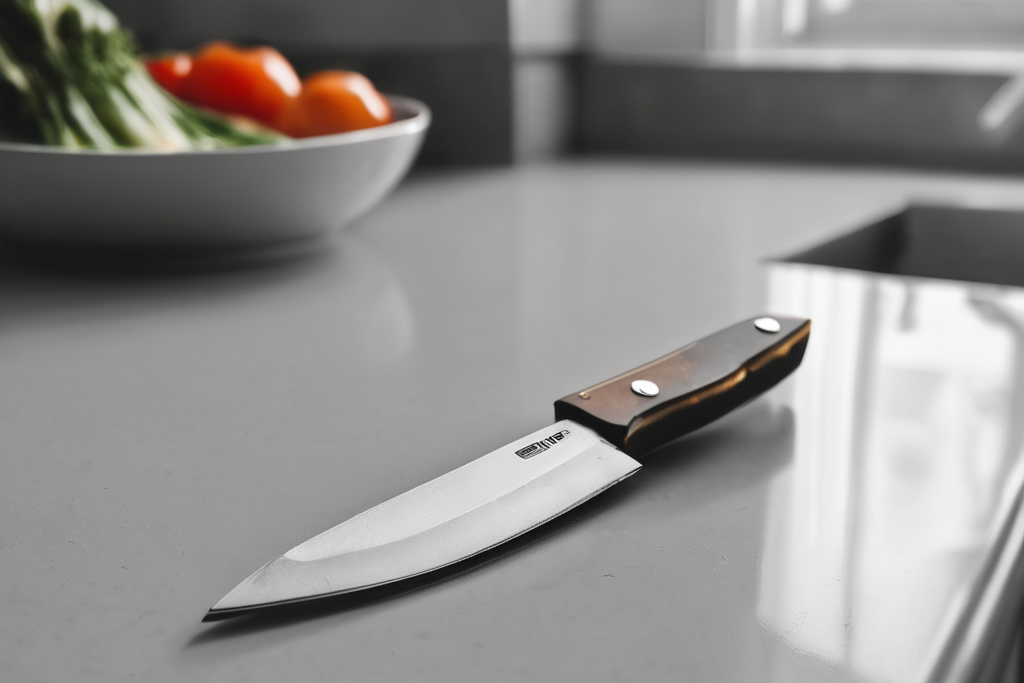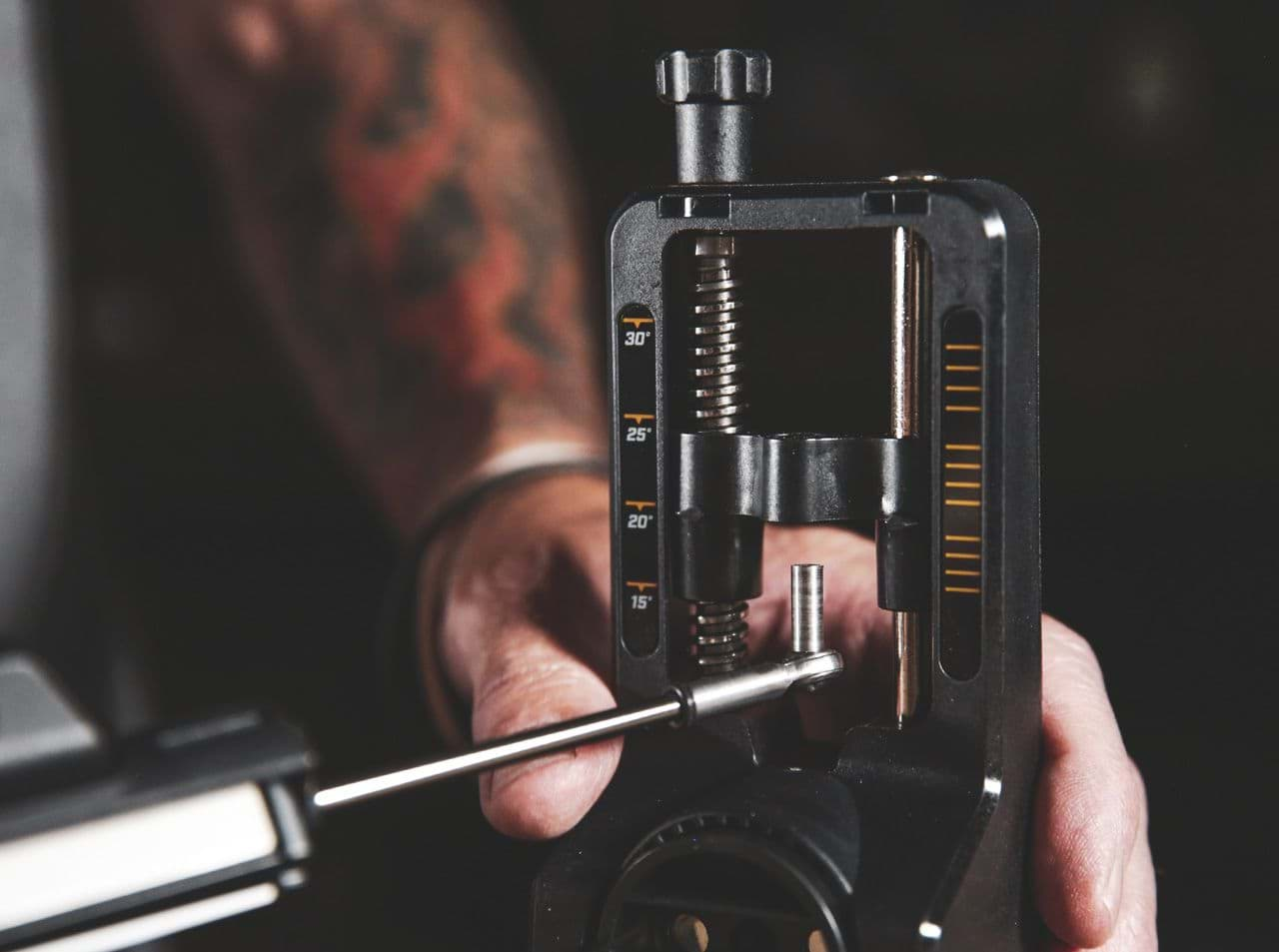A razor-sharp knife isn’t just about aesthetics; it’s about safety, efficiency, and culinary artistry. A dull knife, on the other hand, is a recipe for frustration, sloppy cuts, and potential injury. While many believe knife sharpening is a simple task, achieving a truly exceptional edge requires precision—a level of detail often overlooked. This article delves into the critical importance of precision in knife sharpening, exploring the techniques and understanding why even seemingly small deviations can significantly impact the final result.
Understanding the Anatomy of a Sharp Edge
Before we dive into the precision aspects, let’s briefly understand what makes a knife sharp. A sharp knife possesses a precisely formed bevel, a sloped edge created by grinding away material. This bevel isn’t a blunt angle; instead, it’s incredibly thin and finely honed. The sharper the knife, the thinner and more consistent this bevel is. Any inconsistency, any minute deviation from the ideal angle or sharpness, directly affects the knife’s performance. Imagine trying to cut with a jagged, uneven edge—it’s inefficient, and potentially hazardous.
The Role of Angle Consistency in Sharpness
Maintaining a consistent angle throughout the sharpening process is paramount. Even a slight variation of a degree or two can create micro-serrations along the edge, compromising its sharpness and making it prone to chipping. The ideal angle depends on the type of knife and its intended use, but precision is always the key. Whether you’re using a honing steel, a sharpening stone, or an electric sharpener, maintaining a consistent angle requires careful attention and often, the use of guiding tools or jigs.
Why Torque Matters in Mechanical Sharpeners

For those using electric sharpeners, the concept of torque becomes crucial. Torque, essentially the rotational force applied to the sharpening wheel, directly influences the consistency and pressure exerted on the blade. Insufficient torque can result in a weak, uneven sharpening, while excessive torque may damage the blade or create an overly aggressive edge that quickly dulls. High-quality electric sharpeners usually offer adjustable torque settings, allowing you to fine-tune the sharpening process based on the knife’s material and condition. Choosing a sharpener with sufficient torque, and knowing how to appropriately adjust it, is a significant factor in achieving precision.
Engine Options and Their Impact on Precision

While not all sharpeners are motorized, for those that are, the engine plays a significant role. A powerful, yet precisely controlled motor is essential for consistent sharpening. High-RPM motors often provide the necessary power for quick sharpening, but without precise control, they can easily lead to uneven results. Look for sharpeners that boast smooth, controlled operation and offer variable speed settings. This allows you to adjust the pace of sharpening based on the knife’s needs, ensuring a controlled and precise outcome.
Specific Torque and Towing Specs: A Deeper Dive

While the specifics of torque and “towing” aren’t directly relevant to the sharpening process itself in the same way they are for vehicles, the concept of controlled power applies. The “power” in a sharpener is represented by the motor’s torque and the consistency of its delivery. High-end sharpeners often specify torque ratings, indicating the power behind their sharpening action. You should seek information on the torque consistency – does it remain steady throughout the sharpening process or does it fluctuate? A consistent torque delivery ensures a uniform sharpening experience. Looking for reviews that discuss the consistency of the motor’s action and its power will provide valuable insight into a sharpener’s precision capabilities.
Comparison with Competitors: Features and Performance
The market offers a wide range of knife sharpeners, from simple honing steels to complex electric models. When comparing sharpeners, focus on features that contribute to precision. Does the sharpener have adjustable angle guides? Does it offer variable speed settings or torque control? Are the sharpening wheels made of high-quality materials designed for consistent performance? Consider reading reviews focusing on the consistency of the sharpening angle and edge produced, and look for comparisons against competing models. User experiences provide invaluable insights into the practical precision of different sharpeners.
Practical Advice for Achieving Precision in Sharpening

Regardless of the tools you use, achieving precision requires practice and patience. Start with a clean, dry knife. Maintain a consistent angle throughout the sharpening process. Use light, even pressure, avoiding excessive force that can damage the blade. Regularly inspect the edge to check for any inconsistencies. Finally, don’t be afraid to experiment and learn from your mistakes. Sharpening is a skill that improves with practice. Remember, a few minutes of careful sharpening is far better than hours of frustration with a dull knife.
Conclusion: The Value of Precision
Precision in knife sharpening isn’t merely about creating a sharper blade; it’s about ensuring safety, maximizing efficiency, and enhancing the overall cooking experience. By understanding the factors that contribute to precise sharpening, including consistent angle maintenance, appropriate torque, and the selection of quality tools, you can elevate your knife care routine to a new level of skill and precision. The time and effort invested in achieving a truly sharp edge are far outweighed by the benefits it brings to both your kitchen tasks and overall culinary experience.